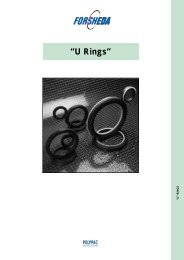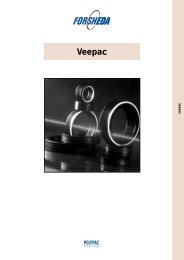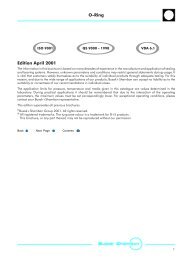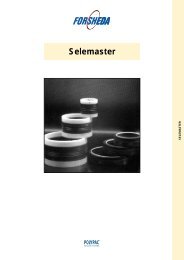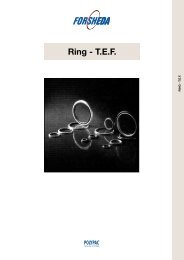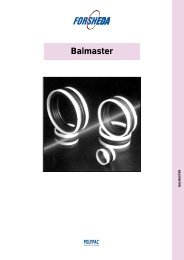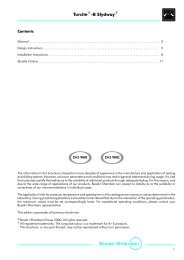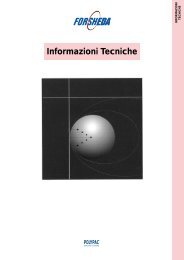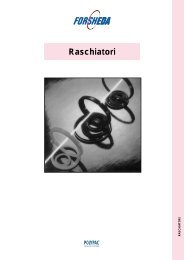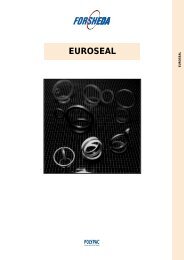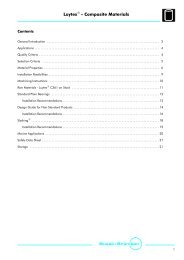Rotary Seals - Dilanda.it
Rotary Seals - Dilanda.it
Rotary Seals - Dilanda.it
Create successful ePaper yourself
Turn your PDF publications into a flip-book with our unique Google optimized e-Paper software.
Radial Oil Seal<br />
Temperature resistance<br />
Increasing temperature accelerates the aging of the<br />
rubber, the material becomes hard and br<strong>it</strong>tle, the<br />
elongation decreases and the compression set increases.<br />
Axial cracks at the sealing edge are a typical indication that<br />
the seal has been exposed to excessively high temperature.<br />
The aging of the rubber has appreciable significance on the<br />
useful life of the seal. The temperature lim<strong>it</strong>s for the<br />
principal materials are illustrated in Figure 7. They should<br />
only be regarded as approximate, since the materials are<br />
also affected by the medium. It can generally be said that a<br />
temperature increase of 10°C (in air) will halve the<br />
theoretical useful life of the rubber.<br />
Oil resistance<br />
Innumerable types of oil are available on the market and<br />
each of these has a different effect on the rubber.<br />
In add<strong>it</strong>ion, a given type of oil from different manufactures<br />
may have a different influence. The rubber is generally<br />
affected by the add<strong>it</strong>ives in the oil. This is the case w<strong>it</strong>h<br />
hypoid oil which contains sulfur. Since sulfur is used as<br />
vulcanizing agent for n<strong>it</strong>rile rubber, the sulfur add<strong>it</strong>ive in<br />
the oil acts as a vulcanizing agent at temperatures above<br />
+80°C. As a result of this secondary curing, N<strong>it</strong>rile rubber<br />
will rapidly become hard and br<strong>it</strong>tle. Hydrogenated N<strong>it</strong>rile,<br />
Acrylic and Fluorinated rubbers which are not vulcanized<br />
w<strong>it</strong>h sulfur, can therefore be used for this type of oil, even<br />
though the operating temperature may not require these.<br />
Oxidized oils represent another example illustrating the<br />
difficulty of tabulating the oil resistance of rubber<br />
materials. These oils are oxidized during operation and<br />
their properties will therefore change substantially. Such<br />
oils break down silicone rubber. The values specified in<br />
table V must thus be regarded as only approximate.<br />
In case of doubt always contact your local B+S company.<br />
NBR<br />
-45 -30 100 120<br />
The temperature ranges apply only<br />
in connection w<strong>it</strong>h media that are<br />
compatible w<strong>it</strong>h the respective<br />
elastomers<br />
-40 -30<br />
-35 -20<br />
-55 -40<br />
-35 -20<br />
HNBR<br />
ACM<br />
VMQ<br />
FKM<br />
140 150<br />
150 175<br />
175 200<br />
200 230<br />
-100 -50 0 50 100 150 200 250<br />
Temperature °C<br />
Working period of 1000 h<br />
Only to be achieved under particular cond<strong>it</strong>ions w<strong>it</strong>h special materials<br />
Figure 7<br />
Temperature lim<strong>it</strong>s for some common types of rubber<br />
22<br />
Latest information available at www.busakshamban.com<br />
Ed<strong>it</strong>ion April 2006



